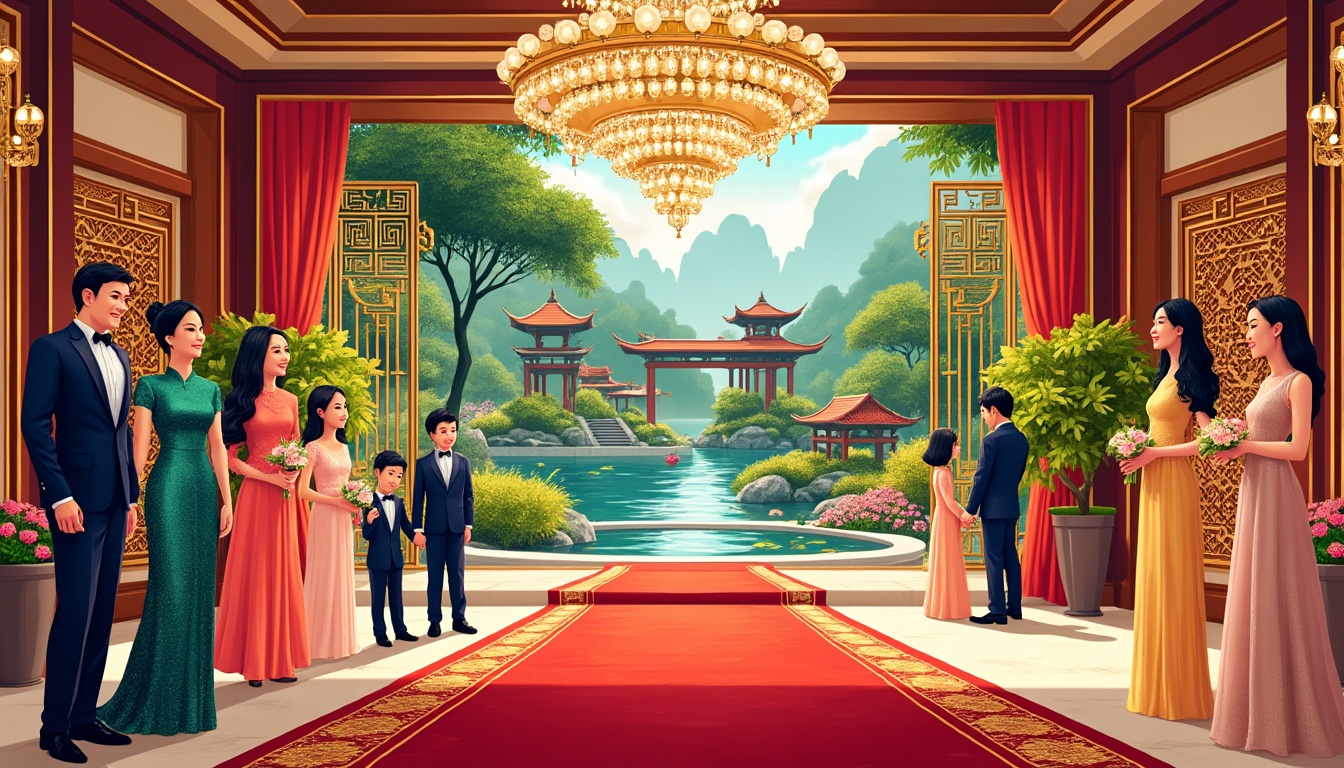With Jon M. Chu at the helm, the beloved story of “Crazy Rich Asians” is set to transition from the big screen to the small screen in an exciting television series adaptation. Following the success of the 2018 film, which became a cultural phenomenon, Chu has decided to expand the universe of Kevin Kwan’s novel into a series format, allowing for deeper character exploration and storytelling. The move comes on the heels of a growing trend in Hollywood, where popular films are being adapted into long-form narratives to give audiences more content while enhancing the #AsianRepresentation in media. As reports of the show’s development surface, fans are left eager to see how the vibrant world and characters will come alive in a new format, especially as Jon M. Chu shares insights into the decision-making process behind this shift.
A New Era for Crazy Rich Asians: Transitioning from Film to TV
The highly anticipated transition of “Crazy Rich Asians” to a television series on HBO Max marks a significant pivot in the franchise’s journey. Jon M. Chu, who directed the original movie, has been vocal about the reasoning behind this move. In discussions with major media outlets, he indicated that the “landscape allowed us to use all the characters,” which is vital for storytelling. Expanding the series to include the wealth of characters was pivotal in his decision-making process. This format provides the necessary “real estate” to fully explore the intricate relationships and cultural nuances embedded within the narrative already established in the film adaptation.

The Impact of Television on Storytelling
The transition from film to a streaming series is not just a pragmatic choice but a strategic one aimed at enhancing the narrative depth of the story. Television allows for longer storytelling arcs, enabling writers to delve deeper into backstories and character developments that typically remain unexplored in a two-hour film. As Chu eloquently states, “every character we wanted to explore needed more room.” This sentiment reflects the shifting dynamics in media consumption patterns, where viewers increasingly prefer serialized content that can be enjoyed over multiple episodes.
In this context, Warner Bros. is playing a critical role in not only developing the series but also in ensuring it reaches the right audience while maintaining high production values. HBO Max, with its diverse content library and focus on original series, makes for an ideal platform to house such a culturally significant story. By merging the charm of the original film with the expansive canvas of television, the series holds the promise of retaining the wit and glamor of the story while unveiling its layers of cultural commentary.
The Future of Crazy Rich Asians: Cast and Crew Insights
As preparations for the series take shape, questions arise regarding the involvement of the original cast. While it’s still uncertain if familiar faces will return to reprise their roles, the production team, including Chu and Adele Lim—who served as co-writer on the original film—are committed to crafting a narrative that resonates with fans of the book and movie while appealing to new audiences. This adaptation’s primary focus is not merely on nostalgia but rather on building an immersive experience that dives deeper into the lives and challenges of the characters. Lim, now set to be the showrunner and executive producer, is expected to infuse the series with her understanding of the characters and the social subtleties presented in Kwan’s prose.
Character Development in Adaptations
The joy of adaptations lies in the ability to have a second chance at storytelling. For “Crazy Rich Asians,” the television format allows for a more extensive exploration of the ensemble cast that originally captivated audiences. Characters like Rachel Chu, played by Constance Wu, and Nick Young, portrayed by Henry Golding, can be fleshed out further, providing viewers with an opportunity to connect more deeply with their journeys.
Strong character arcs are crucial in engaging the audience and maintaining their interest over multiple episodes. With the intricacies of family dynamics and the pressures of wealth juxtaposed against romantic entanglements, the narrative can dive into themes that were only skimmed in the film. Warner Bros. is aware that a successful transition lies in nurturing these character developments while adhering to the humorous and heartfelt tones set by the original story.
The Broader Context of Hollywood Adaptations
The shift toward adapting films into streaming series isn’t unique to “Crazy Rich Asians.” Recent trends in Hollywood have seen numerous franchise films being revisited for television adaptations, a method that allows studios to capitalize on existing fan bases while expanding narratives. This approach also aligns with the streaming industry’s demands for consistent content, as networks strive to engage audiences beyond the traditional episodic formats. Viewers now desire extended universes that delve deeper into character emotions and societal implications, particularly in popular series adaptations.
Analyzing Audience Growth and Demand
Fulfilling the audience’s desire for greater representation and authenticity, Chu’s vision for the “Crazy Rich Asians” series mirrors a broader movement towards inclusivity in media. The focus on Asian representation in media has gained momentum, addressing the long-standing narrative gaps in Hollywood. With diverse cultures and backgrounds, the series aims to solidify its characters as relatable figures within a larger societal framework.
In the wake of Chu’s innovative approach, the series is poised to bridge cultural dialogues. By addressing modern themes of identity, familial expectations, and financial pressures through the lens of Asian culture, it signifies a step towards more profound inclusivity within major studio productions.

Merging Franchises with Audience Expectations
The convergence of fan expectations with the creative decisions made by the development team will play a vital role in shaping the identity of this adaptation. As audiences reflect on the success of the film, expectations are both high and varied. The legacy of “Crazy Rich Asians” is already significant, which puts pressure on the television series to replicate its brilliance while carving out its unique narrative pathways. This balance between honoring the original work and introducing new elements is a challenge faced by many adaptations today.
As Jon M. Chu and his team embark on this ambitious project, they remain focused on unity within the narrative while exploring the juxtaposition of wealth and family ties inherent in Kwan’s world. By providing an engaging and well-rounded exploration of its characters, ‘Crazy Rich Asians’ promises not only to entertain but also to enlighten viewers with deeper messages about culture, love, and personal struggles.
Cultural Significance and Potential Cultural Impact
The ongoing development of the “Crazy Rich Asians” television series represents an exciting moment in the landscape of contemporary media. With each production decision, Chu, Lim, and their team have the opportunity to redefine narratives and shape the cultural dialogues surrounding Asian representation. This adaptation aims to connect with viewers not only through humor and drama but by highlighting the complexities faced by the Asian community in modern society.
The forthcoming series serves as a lens through which societal issues can be examined while celebrating the diversity and resilience of Asian cultures. Engaging in these themes ensures that the series resonates well beyond its intended entertainment value, offering viewers a comprehensive experience that reflects on both personal and collective aspirations.
| Aspect | Film Adaptation | Television Series |
|---|---|---|
| Runtime | Approx. 2 hours | Multiple Episodes |
| Character Depth | Limited | Extensive |
| Plot Development | Condensed | In-depth |
| Viewer Engagement | Single Viewing | Ongoing |
| Platform | Theatrical Release | Streaming |


